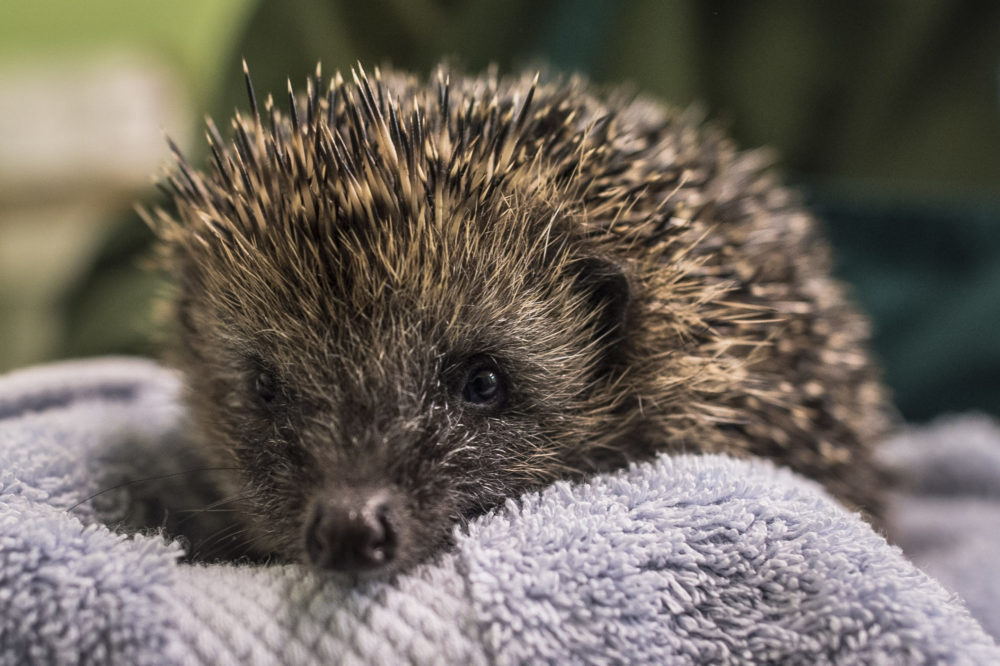Hedgehogs listed as ‘near threatened’ after suffering rapid population declines

Hedgehog numbers have suffered rapid declines, conservationists warned as the species was listed as “near threatened” in a global assessment.
The latest update to the International Union for Conservation of Nature’s (IUCN) Red List of threatened species has also found more than a third (38%) of the world’s tree species are at risk of extinction.
And experts said migratory birds which visit British shores, including grey plover and dunlin, were seeing their conservation status worsen.
The conservation status of western European hedgehogs on the Red List has worsened from least concern to near threatened – which means that any further deterioration of its situation could see it listed as at risk of extinction globally.
Shrunk
The IUCN said the species’ numbers are thought to have shrunk in more than half the countries where it lives, including the UK as well as Norway, Sweden, Denmark, Belgium, the Netherlands, Germany and Austria – with national declines of 16-33% over the past 10 years.
In the UK, the prickly mammals have suffered historic declines, and a study in 2022 found numbers had fallen by up to 75% in rural areas since 2000, although in urban areas previously declining populations were showing starting to show signs of recovery.
The IUCN experts said hedgehogs were suffering from increasing human pressure, including increasingly intensive agriculture which damages their rural habitat, roads and urban development.
Dr Abi Gazzard, programme officer of the IUCN’s small mammal specialist group, said: “Regional and national action is essential to support hedgehog populations, through initiatives such as ‘Hedgehog Street’ in the UK and ‘Danmarks Pindsvin’ in Denmark.”
Hedgehog Street is a campaign run by the People’s Trust for Endangered Species and the British Hedgehog Preservation Society, which encourages people to champion and help the once-common garden visitors with simple actions such as making holes in their fence to help them move about.
Struggling
Responding to the report, Nida Al-Fulaij, chief executive for People’s Trust for Endangered Species (PTES), said recent research showed that hedgehog populations are still struggling in the UK’s countryside despite showing signs of recovery in urban areas.
“The news that European hedgehogs have been reclassified by the IUCN as Near Threatened globally raises the alarm for this much-loved native species across their range,” she said.
Fay Vass, chief executive of British Hedgehog Preservation Society (BHPS), urged members of the public to become a “hedgehog champion” by supporting the species through a range of actions throughout the year.
“I’d encourage everyone to help where they can, as small, simple actions can have a huge impact on habitat availability, connectivity, and quality, which is crucial for their long term survival,” she said.
The latest IUCN Red List update also includes the first global tree assessment, including the majority of the world’s tree species on the list for the first time, and revealing that 38% are threatened with extinction.
The highest proportion of threatened trees are found on islands, where they are at high risk due to deforestation for development and agriculture, invasive species, pests and diseases.
The IUCN also said climate change was increasingly threatening trees through sea level rise and more intense and frequent storms, especially in the tropics.
Habitat protection and restoration, as well as conservation in seed banks and botanic garden collections were critical to prevent extinctions, conservationists said.
Dr Grethel Aguilar, IUCN director general, said: “Trees are essential to support life on Earth through their vital role in ecosystems, and millions of people depend upon them for their lives and livelihoods.”
The IUCN said trees now accounted for more than a quarter of species on the Red List, with the number of threatened trees more than double the number of all threatened birds, mammals, reptiles and amphibians combined.
The IUCN Red List now includes 166,061 species, of which 46,337 are classed as threatened with extinction.
The update has been published as countries meet in Cali, Colombia, in the latest round of international talks aiming to halt and reverse what conservationists have described as “catastrophic” declines in nature.
Support our Nation today
For the price of a cup of coffee a month you can help us create an independent, not-for-profit, national news service for the people of Wales, by the people of Wales.





Help the spikey ones out with cat biscuits, kitten biscuits are better with a high meat content. Absolutely no meal worms or sunflower seeds, the meal worms lead to a horrible death but they love em. Water bowls for them, lots of water. No pesticides, they only eat slug and snails as a last resort (they can get parasite infestations from slugs and snails), beetles and worms preferred, so get the untidy edges and woodpiles going. And cut holes in fences so they can wander. And no, you cannot look after them, dedicated rescues are your best bet if you… Read more »
Hedgehogs can feed on the gribs of insects, snails, frogs and toads, snakes, bird eggs, carrion, mushrooms, grass roots, berries, and fallen fruit. These are all seasonal. It’s the all-year ‘bread and butter’ food of worms and beetles during sparce seasons. Cow pat scavengers. In this their main predator is foxes and their main competitor is badgers. It may be that predation and competition that has led to their decline. I wonder how they fare in the badger cull niches in England as they share the same peturbation boundaries?